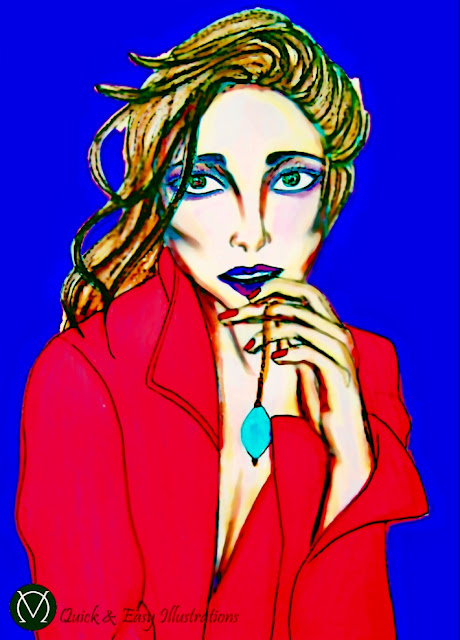Quick & Easy Illustrations by Mai Manaloto
I remember that moment that made me so vividly, it
was about a year and nine months ago. I was going on an interview for a
lifestyle website brand, it was nerve racking and exciting altogether and I
remember wearing an all black ensemble that showed–off my figure and yet still
conservative. I spent quite some time fixing myself; putting some make-up,
doing my hair, grooming and styling. It was for a fashion design role and
clearly being fashionable was simply implied. Calling to mind that moment I
went on that job interview got me pondering about Leen Demeester’s assertion on
how appearance is a woman’s business card and fashion is the code. In matters
of career advancement, is a woman’s appearance as well as her place in society
dependent on the clothes she wear? Clothing is defined as anything attached or
altered on the body (read more on Misguided Fashion: The Misconception In Clothing). Can attractiveness even substitute or equate to a
bachelor’s degree? These are few interesting grounds that will be discussed in
this discourse.
Fashion history for more than 2,000 years only
proves how women place a lot of importance towards their outside appearance. A
good example to examine would be the corsets. Corsets are great example on how
women have attached great importance towards their looks. It was around the
16th and 17th Century, during the Elizabethan and Spanish fashion period, that
corsets became a prominent fashion attire for the elite women of Europe.
Comfort was set aside for the sake of aesthetic – the more slender the bodice,
the more beautiful a woman was perceived.Women’s long attachment to physical
appearance marks the emancipation of women in society. It is a controversial
discourse because not all women sits well with the idea of objectification and
male gaze. Nonetheless, men and women play a complementary role in the system
of fashion as men have a tendency to view women as objects of desire, while
women in turn, have a tendency to perceive themselves as objects of desire. In
my opinion, women should not be enraged with the concept of objectification. It
is something that both sexes must celebrate because it glorifies the
compatibility of the male and female gender roles (read more on Clothing Drive: Fashion Fueled By Desire).
It is no secret that appearance can influence a
woman’s advancement in terms of career. This has been one of the business of
fashion – turning beauty and adornment into a necessity for success. A German
study confirms that wages, promotions and perks at work are somewhat related to
a woman’s attractiveness. A theory suggest that this is the case in a business
level because attractive individuals leave more lasting impression. Another
study suggest that women wearing more make-up is seen as more competent.
Make-up is found to increase people’s perception of women’s likability and
trustworthiness. The bottom line is attractiveness could act as a tool to
open a door. But there is another side to being attractive. In a work place,
being too attractive can work against women. Some co-workers might have
assumptions as to how an attractive female got the job, which means that a
doubted attractive woman have to actually work harder to prove herself. More
so, when someone beautiful have proven herself, it can be harder to accept
because an attractive and smart colleague can definitely appear as a threat.
The politics of beauty in a work place is that, if a woman is too attractive it
doesn’t work for her favor because she’s not taken seriously by both men and
women. On the other hand, a non-extremely attractive woman do get an edge.
Interestingly enough, being attractive is pursued and discriminated at the
same time.
The reality is that looks are a hidden persuader.
It is understandable that many are reluctant to admit that a woman’s appearance
influences her advancement because it is superficial, shallow and bias at best.
The truth is, no one will admit that something so trivial will even impact
their decision-making process even though it really does. Appearance
becomes a powerful factor in career advancement. However, it’s not all about
physical beauty – it’s something to be attractive, but it’s not all there is.
Looks will fade, fashion goes out of style and vitality begins to exhaust
itself. This is the reality for all, so it’s still best to not bank on your
looks and start honing some skill sets. Fashion and career endeavor is about
presenting yourself strategically. A strategically presented woman,
someone who has intelligently immersed herself in the realm of fashion, has an
immense advantage over their simply average or disheveled colleagues. It takes
more than just looks, it’s about the package deal – dressing appropriately,
having an amazing attitude and a strong work ethic. It’s worth remembering
that success is a result of talent, drive and skill set but it wouldn’t hurt
for women to have their best stilettos forward and crimson lipstick on as
they conquer the world.
Source: Leen Demeester (2013). Fashion Icons:
Fashion Trends Throughout The Centuries. Lannoo Publisher.




